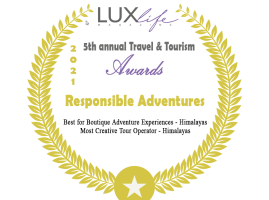Juphal to Jomson Trek Upper Dolpo Traverse
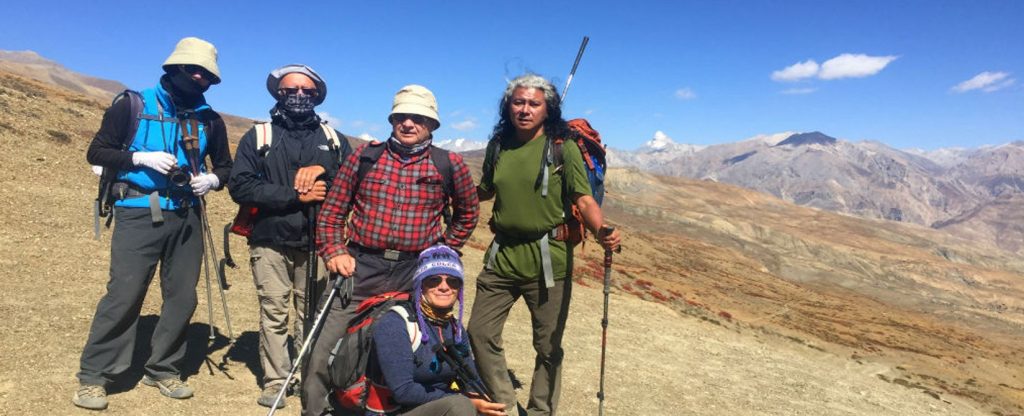
Upper Dolpo Traverse – Juphal to Jomsom September/October 2017 The trek was finally confirmed after months of correspondence back and forth in August. We had our first ever Polish group consisting of 5 members. Trekking Staff movement – Pre trek. This trek is in the High and Wild part of Nepal and takes a lot of planning. I had been planning for weeks on end. Our staff, who spend most of summer monsoon trekking in Ladakh, got back five days, and Dil got into Kathmandu one night before leaving for Dunai, Dolpo district’s administrative centre. These poor lads had to take four days’ drive, changing four vehicles as there are no bridges over the swollen rivers, porter the gear and food to the other side, load it onto another transport, and continue their bumpy ride. After four days of the hot, sticky, rough, and sometimes bruising ride, they had to load the equipment and food on mules and continue their journey on foot for two days. They finally got the Dunai on the 6th day. They still had to sort out the rental tents and kitchen equipment and go shopping for fresh vegetables before we arrived. Upper Dolpo Group movement One group member pulled out due to compassionate reasons on the day she was to fly towards Nepal. One group member arrived via Delhi in the morning, while the rest arrived via Doha. Upon arrival at the hotel, the standard check-in, I arranged for the money changer to come to the reception area with local currency for the trekkers as part of our service. We parted ways after agreeing to meet the following evening for dinner and updates. They were left on their own as they all had been to Kathmandu at least twice before, and they knew their way around town. We met for dinner at an agreed time, the trekkers got briefed on the program for the next day, and we flew to Nepalgunj in the afternoon. The flight to Nepalgunj got delayed by 30 minutes, but a brand new old ATR72-500 of Yeti Airlines made up for the lost time. The aircraft was filled with two big groups of medical/missionary volunteers to the Humla district. It was hectic trying to retrieve our luggage while being eaten alive by mosquitoes. The heat and the humidity didn’t help much. It was a relief to get to our hotel’s air-conditioning – Traveler’s Village, just a few kilometres from the airport. We retired early, as we had to get to the airport by 5.30 a.m. for our flight to Juphal. We collected our packed breakfasts, loaded the vehicle with our luggage, and headed for the airport. The airport was buzzing with activity. Upon checking in, I was informed that we had 74 kilograms of excess weight and had to pay RS150 per kg. Upon doing so, I joined the group after the security check, and the weather had worsened; it had started raining. We were informed that the flight was cancelled due to bad weather at Juphal. The airline crew we had booked our plane had a day off the next day, and they wouldn’t fly. I called up contacts to convince them to pass the next day or get seats on another airline but to no avail. We were fortunate to have understanding clients who said there was no need to get stressed out if the flights were not happening. We spent the next day touring around Nepalgunj; mind you, most locals we spoke to said not much to see here. We returned to the hotel in the afternoon after sending the morning in an electric vehicle. Day 1 The following day we got into our aircraft, and in a short time, we landed at Juphal airport. We decided to walk part of the way until our vehicle met us on the trail; we walked to Dunai. We expected the weather to be much colder above 2000 meters, but it was still scorching. We were glad to be united with our team, who had been waiting for us and had a quick discussion to get moving that day after a quick lunch. Our group consisted of me as the trek leader, two trekking chefs, one trek butler, one local assistant, two pony men, and ten mules. We started along the Thulo Bheri River and turned northward an hour later along the Suligad River. We registered with the Shy Phoksundo National park at their entrance, the largest in Nepal. We got to Kageni just before dark as we had a late start to the day. Our crew and mules reached the campsite 30 minutes after we did, and they quickly set up the tents for the trekkers and made dinner within 90 minutes of our arrival. Day 2 The following day we walked in a northwesterly direction going upstream of the Suligad river, which comes from Phoksundo Lake. The hike was in the beautiful forested area passing through Shyanta and Chepka until our final stop at Rechi. Our mules and support crew got delayed as one of our mules brushed against a rocky outcrop on the trail and fell into the Suligad River. Our pony men quickly jumped into the waist-deep river and pulled the mule out. The mule escaped with no injuries; its load, two tin boxes, was utterly smashed. Once again, they arrived just before dark, but like the previous night, our team was swift in preparing our dinner, and everyone went to bed content.
Travel Guide to Leh and Ladakh
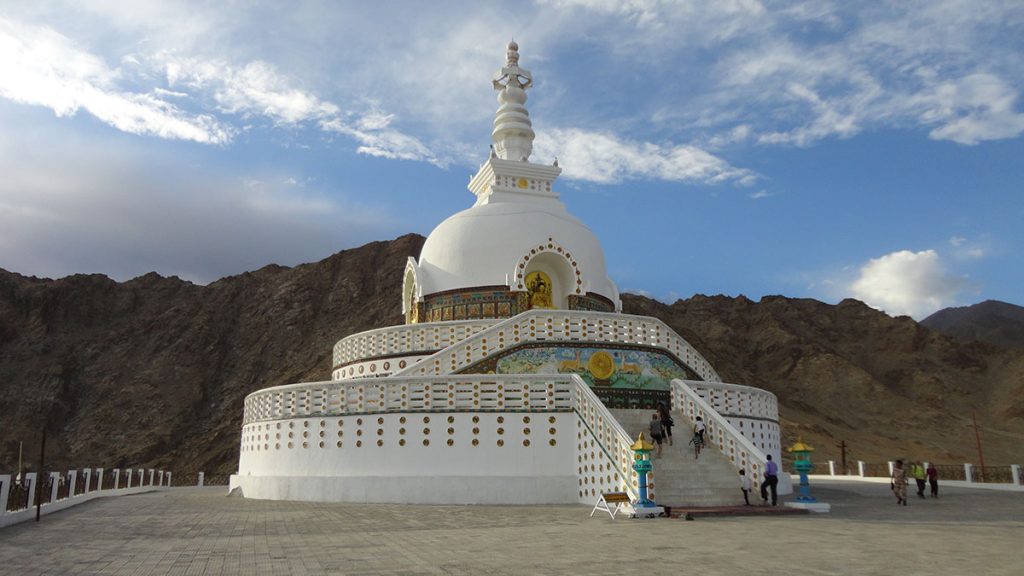
Travel Guide to Leh and Ladakh In India’s northernmost tip, Ladakh, near the Indus Valley, lies at Leh at 3,500 meters above sea level. Leh, a remote town, has become a popular tourist destination since it was opened to foreigners in 1974. It is gorgeous and one of the standard entry points to the Ladakh region. Bordered by two of the world’s most extensive mountain ranges and surrounded by high-altitude desert. Leh’s dry, arid landscape is full of historic Buddhist monasteries, making it an incredible sight to watch. Getting There Several flights operate to Leh from Delhi regularly. There are also flights to Leh from Srinagar and Jammu. In addition, two highways connect Leh for a few short summer months when the snow has melted on the high passes. Each year the highway from Srinagar to Leh is open from Late May to November, and the Manali-Leh road is open from June to October. Bus, Jeep, and taxi services are available for the overland journey. The overland trips take a relatively comfortable two days or a long journey of 18 hours driving on the challenging terrain. If you are in good health and not in a rush, the overland journey must, at least once in your life, enjoy the stunning scenery. Best time to Go The best time to visit Ladakh is between May and September, when the temperatures are at their warmest. Ladakh is in the rain shadow, and it is not supposed to rain there like most places in the Indian Subcontinent experience. However, due to climate change, it started to rain more than 15 years ago, and occasionally there have been rare flash floods, which were quite catastrophic. Attractions and Places to Visit Ladakh’s Buddhist monasteries and historical monuments are the biggest attractions for travellers. The Shanti (peace) Stupa, just outside the centre, is one of the monuments that stand out in Leh. The 800-year-old Spituk Monastery, known as the Kali Mandir to the Hindus, houses a fascinating collection of masks. One can stop to spin a large prayer wheel over there. The imposing 17th-century Leh Palace was modelled after the Potala Palace in Lhasprovides, a captivating town view. Thikse Monastery, which lies southeast of Leh, is the place to witness amazing sunsets. The Hemis Monastery is Ladakh’s oldest, wealthiest, and most influential monastery. Festivals in Ladakh The Ladakh Festival is held for the first two weeks of September. The opening ceremony is a spectacular procession through the streets of Leh. Villagers wear traditional costumes, dance, and sing local folk songs backed by an orchestra. The festival also showcases musical concerts; Buddhist monks perform mock wedding ceremonies and masked dances. One of the most popular Hemis Festivals takes place during June / July, Tantric Buddhism’s birthday in Tibet – Guru Padmasambhava. The festival contains colourful handicrafts for sale, colourful masked dances, and traditional music. The Hemis Festival takes place for two days. Adventure Activities Ladakh Nature lovers and adventurers will find a new and exciting opportunity to paraglide around Leh. Trekking has been a long-standing outdoor adventure activity in Ladakh. There are trekking options such as the Sham Trek for beginners and more extended trekking tours such as the Lamayuru to Alchi, the ever-famous Markha valley trek, and numerous treks two to three weeks long. Here is a list of some of the best treks in Ladakh. Those who seek more adrenaline rush can opt for mountaineering trips to either Goleb Khangri, Stok Khangri, or Khangyatse. Whitewater rafting is another outdoor activity done during July and August on the Indus River in the Leh area and the Shayok River in the Nubra Valley. The Zanskar River in Zanskar. In addition, one can partake in a camel safari in The Nubra Valley, as well. Trips outside of Leh One of the most impressive short side trips outside of Leh is the journey toward the Zanskar River. You can see hanging glaciers, the oasis of green villages amidst the arid landscape, Buddhist monasteries, and Himalayan peaks. The Nubra Valley, via Khardung La pass, is another unforgettable trip. The Indians love to claim the road to Khardung La as the “highest motorable road in the world”; if you did not know it already – https://jalopnik.com/the-worlds-ten-highest-roads-1561766761. Nubra Valley’s trip is rewarding with the beautiful streams, rivers, grazing yaks, ponies, dunes, and the Bactrian Camels. Required Permit Foreigners need to get a protected area permit (PAP); this can be obtained through licensed travel agents in Leh. No Permits are required for local sightseeing around Leh, Zanskar, or the Suru Valley. Places to Stay Changspa, once a backpacker hub, has a combination of guest houses and upmarket hotels. There are a growing number of homestays in this area. It is just a short walk from the central Bazaar area. There are also many restaurants with charismatic gardens to chill out in. This area is a favourite place for homestays. On Fort Road, Padma Guesthouse and Hotel has rooms for all budgets and a fabulous rooftop restaurant. The Spic n Span Hotel on Old Leh Road, close to the main town centre, is an excellent hotel with modern amenities, and room prices start from around 5,000 rupees per night. The Hotel City Palace is well recommended. Room rates start from 5,000 rupees per night for a double. When on a trek, an excellent option available on some trekking routes is to go for homestays rather than camping. It gives you a delightful experience of staying with a Ladakhi family, sampling local food, and mingling with other trekkers if you do not mind the company of others. Some of these areas have initiatives to enhance the livelihoods of the villagers you visit or stay with. Travel Tips Give yourself enough time to acclimatize to altitude after arriving in Leh, especially if you fly in. Keep exertion to a minimum for the first day or two. Increase water consumption to avoid confusion between Acute Mountain Sickness and dehydration. Electronic devices’ batteries drain in that kind
Bhutan Tourism Facts
Bhutan Tourism Facts The Government of Bhutan allowed tourism to begin in 1974 to promote its unique culture and traditions and raise revenue in the otherwise isolated Kingdom. Bhutan government’s slogan for tourism is “Low Volume, High Quality.” Two hundred eighty-seven tourists visited Bhutan in the first year. Tourist arrivals increased steadily to 2850 in 1992, and up to 7158 in 1999. These days the number of visitors to Bhutan is around 80,000. Tourism is a massive contributor to the Bhutanese Government’s coiffeur and one of the biggest employers. However, the government is profoundly aware of tourism’s effect on the environment, unspoiled landscape, and tourists’ unique culture. Therefore, they have restricted the level of tourist activity from the start, preferring higher quality tourism. Bhutan Tourism Corporation Limited (BTCL), and quasi-autonomous and self-financing body, implemented the government’s tourism policy until 1991. The Bhutanese government privatized BTCL in October 1991. These days more than 800-registered travel companies are operating in Bhutan. All individuals or groups must travel on a pre-planned, prepaid, guided package tour in Bhutan. Most foreigners aren’t allowed to go independently in the Kingdom. The arrangements must be made through a government-registered travel company or an overseas tour operator. The most important tourism centres are in the capital Thimpu, Paro’s western city, where the only international airport is located in the Kingdom. Taktsang, also called the “Tiger’s Nest,” is a monastery on a Cliffside overlooking the Paro Valley. This is an incredibly sacred temple to Buddhists. A Buddhist deity is housed in a cave in the Temple. It is believed this Deity introduced Buddhism to Bhutan and fasted for 90 days while fighting the demons that inhabited this valley to spread Buddhism. This impressive Temple has stood for more than a millennia despite two fires (the repaired damages). Punakha Dzong (fort) is another important site to visit. It is the second-largest Dzong in Bhutan and is still a significant ceremonial venue for the Royal family. For example, the current king’s coronation and wedding took place here. Druk Air, the National Carrier, and Bhutan Airlines (private airlines) operate flights in and out of Bhutan. The current minimum daily package includes the following: 1) A minimum of 3-star accommodations – you can upgrade to 4 and five stars for an additional charge. 2) A licensed Bhutanese tour guide for the period of your tour package. 3) All transportation by road (excludes domestic flights), if you are also trekking – camping equipment and portage of all gears and food during the trekking period. 4) It includes all permits, entrance fees, and meals – breakfast, lunch, and dinner. The minimum daily package cost for tourists travelling in a group of 3 or more during the low season months of January, February, June, July, August, and December is US$200 per person per night. The minimum daily package rate for tourists visiting in a group of 3 or more during the high season months of March, April, September, October, and November is US$250 per night per person. If you are a single traveller, the government charges an additional F.I.T. surcharge of US$40 per night. If there are two of you, you need to pay an additional US$30 per night of your Bhutan tour. The Royal Government of Bhutan sets minimum selling prices for packages to Bhutan. These must be paid in U.S. dollars before arrival in Bhutan. Cancellation Would you please discuss the cancellation policy with your service provider (tour operator)? All Bhutan Tours are prepaid, so you’ll only need money for drinks, laundry, souvenirs, and tips; for this, it is best to bring cash. A.T.M.s are available in most main towns. However, it would be wise not to rely entirely on being able to use plastic. Credit cards are accepted in some hotels and souvenir shops, but only in major cities or “tourist” areas. The currency unit is the Ngultrum (Nu), which is pegged to the Indian rupee. The Ngultrum is further divided into 100 chetrums. Indian rupees are used freely all over Bhutan (don’t be surprised if you get the change in rupees). Officially 500 and 1000 Indian rupee notes are not accepted due to large counterfeit bills. It is OK with the Bhutanese to bring a reasonable amount of Indian currency into Bhutan, though Indian regulations prohibit currency export. Check out our Trekking packages for Nepal, Bhutan, India, and Tibet.
Best Things to do in Sikkim
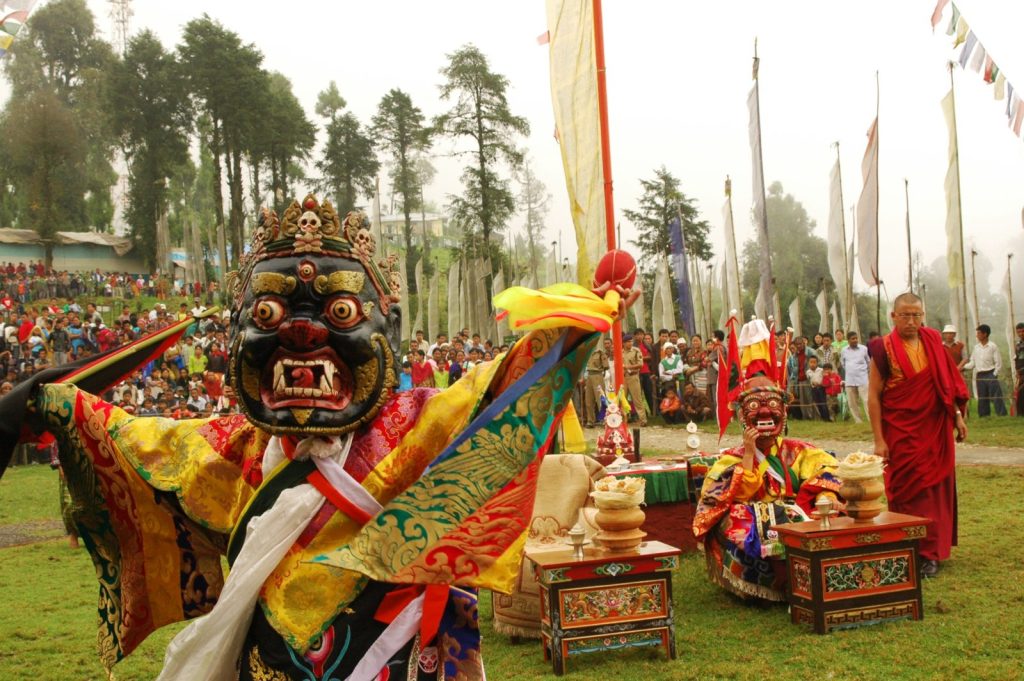
The Top Things to do in Sikkim Nature has given Sikkim lush forested hills, snow-clad Himalayan peaks, deep valleys with raging rivers, and fresh air. The top activities in Sikkim include shopping, sightseeing, whitewater rafting, paragliding, and trekking. It is distant from metropolitan cities’ complications, making this Himalayan state a fascinating place to visit. These are the activities worth considering to make the most of your travel to Sikkim. Cable Car Ride Gangtok A ride in the Gangtok cable car is one of the fun things to do in Sikkim. Enjoy the picturesque scenery from onboard the Gondola. The 1km cable ride begins at Deorali Bazaar near the Institute of Tibetology and goes on to Tashiling, net to the Secretariat. On clear days one gets to admire Mount Kanchenjunga and Gangtok town from the height of 3500 m. The cable car operates from 8 am to 4.30 pm for a small fee. Rumtek-Monastery The Rumtek monastery is one of the most popular attractions of Sikkim. It is located 24 km from the city of Gangtok at an altitude of 6000 feet. This monastery is of the Kagyu sect of Tibetan Buddhism. The Kagyu sect is one of the six primary schools of thought of Tibetan Buddhism. It originated in Tibet in the 12th century. The Rumtek monastery is also known as the centre for Dharma Chakra. The previous incarnation of Karmapa used to reside here before being reincarnated in Tibet. The relics from the Tsurphu monastery are used to decorate Rumtek. Two important festivals take place here every summer and winter. You can enjoy a peaceful walk around the vicinity while enjoying the rich history, culture, and spiritual bliss. Yak Ride Riding a Yak is one unique experience in Sikkim. The animal is an inhabitant of the harsh climate and inaccessible terrain. The Yaks for riding are tamed and pretty well-groomed for tourists. They are decorated with colourful woollen knitwear over their horns, foreheads, and bells tied on their necks. It can be a thrilling ride that comes with a memory to last you a lifetime. The Yaks are available for riding during the busy tourist season from March to May and September to December. Yak rides are possible in Dzongri and Tsomgo Lake areas. Nightlife in Sikkim You might not have heard of Sikkim as a place to party. It is one of the Indian states where alcohol is tax-free, making it inexpensive. Gangtok is a favourite place to spend evenings. There are numerous options for a night out in Gangtok, including multiple bars, pubs with live bands, Karaoke bars, nightclubs, and even casinos. Sikkim is the only state in India that has in-land casinos. The other casinos in India are in boats where you are taken offshore for gambling. The mountain state’s local drinks are Chiang, Tongba, and Rakshi, which can be tempting and inexpensive. Dining out is another fun thing to do in Gangtok. Again, you can go for some international fare or try out local delights.
The top things to do in Darjeeling
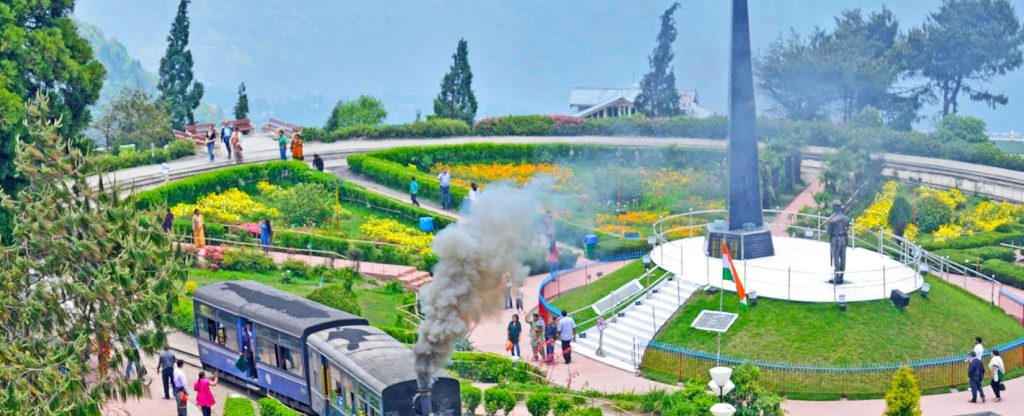
The Top Things to Do in Darjeeling Darjeeling is the favourite hill station in West Bengal. It is an excellent introduction to the North Eastern Himalayas. It is ideal for families, honeymoon couples, nature lovers, and adventure enthusiasts. Here is a list of top things to do in Darjeeling when you visit this picturesque hill town. Staying at a Tea Garden Going on a tea garden tour is not a new idea for Darjeeling. The hill station has been renowned for its numerous tea gardens since the British era. Darjeeling is sometimes hailed as the “Pilgrimage site for tea lovers,” with some 80 tea gardens still operational. The lush gardens that sprawl across thousands of acres are famous attractions for Darjeeling’s visitors. The brand Darjeeling alone is associated with top-quality tea around the world. You can plan to stay at one of the tea gardens rather than just visiting one for a few hours. There are some pretty comfortable lodgings at various tea estates. Some of them have been well maintained since the Colonial era. You can choose from a modest bungalow to a gran Mansion from the British Raj. The experience of staying at a Tea Garden can give you a lifelong memory, set away from the cities’ chaos in a peaceful surrounding. Tiger Hill: Tiger Hill is a popular tourist attraction in Darjeeling. It is a beautiful viewpoint on clear mornings for one of the most stunning sunrises in the Himalayas, with Mount Kanchenjunga, the third-highest peak being the main show-stealer. Most tourists come here early with the hope of catching the first rays of the sun as it hits Kanchenjunga and the numerous snowy peaks around it. However, other 8000-meter mountains such as Mount Makalu, Lhotse, and even Everest can be seen from Tiger Hill on very clear days. Padmaja Naidu Zoological Park The Padmaja Zoo in Darjeeling is an institution dedicated to the conservation of endangered species of Himalayan wildlife. Visitors often leave in awe after seeing the exotic wildlife of the Himalayas. The zoological garden is built on a hilly landscape to depict the natural habitat for the fauna. Look out for the beautiful clouded leopard, snow leopards, Siberian tigers, other big cats, sloth bears, Himalayan black bears, red pandas, and Tibetan wolves. The natural settings help the animals exist with ease. The Padmaja Naidu Zoological Park runs a very successful breeding of Himalayan tahr, blue sheep, Himalayan Monal, Himalayan salamander, red pandas, and grey peacock pheasant, satyr tragopan, and blood pheasant. In addition, the zoo is renowned for its conservation breeding programs of the red panda, Himalayan salamander, Tibetan wolf, and snow leopard. Set within the same compound of the zoo is the Himalayan Mountaineering Institute. It is a centre that trains outdoor and mountaineering courses. In addition, there is a mountaineering museum. The admission ticket covers both attractions. Both remain open daily from 8 am to 4 pm. The Himalayan Mountaineering Institute (HMI) The Himalayan Mountaineering Institute is almost a shrine for many mountaineering aficionados. The HMI conducts mountaineering and adventure courses several times a year. The Himalayan Mountaineering Institute was established in honour of two famous mountaineers, Tenzing Norgay and Sir Edmund Hillary, after Everest’s summit in 1953. The HMI museum has a vast collection of climbing gear and equipment types from the bygone era, bringing the visitor much nostalgia. It is an excellent place to visit and can combine with a visit to the Padmaja Naidu Zoo. Explore colonial connections The British Colonialists chose to reside in Darjeeling because of the similarities with the climate back home, with a bonus of the scenic beauty. Many buildings standstill from the British Raj. Some classical structures from the 19th century are the Capitol Building, The Immaculate Conception Church, the Windermere hotel, and the Glenburn Tea Estate. These beautiful buildings remind both residents and visitors of the colonial days. One can enjoy a luxury stay at the Windemere Hotel and the Glenburn Tea Estate with the bygone era’s nostalgia. Toy Train Ride. Darjeeling is well known for its tea, scenic beauty, and impressive mountain railway. This narrow-gauge railway is a marvel of engineering and a UNESCO World Heritage Site. The railway is also called “Toy Train,” and riding the “Toy Train” is on the list of things to do while in Darjeeling. A ride to Ghoom and back takes half a day. The train fare is INR 360, which includes the entrance to the train museum at Ghoom. Ghoom Monastery Darjeeling had a longstanding trade connection with Tibet. Many Tibetans took refuge in Darjeeling in 1959 after the mass exodus from Tibet. India has since become an important centre for Tibetans. The Tibetan Self-Help Center has become a vital hub for the Tibetan community. Visit the centre to learn about their history and support them by purchasing their beautiful arts and crafts. The ornate Buddhist monasteries of Darjeeling are worth visiting. Some of the not to be missed Monasteries are the Bhutia Busty Gompa, which also happens to be the home to the original copy of “The Tibetan book of the dead.” The Ghoom Batasia monasteries are two other monasteries not to be missed. These monasteries are in a lovely setting, with Mount Kanchenjunga towering over them and the Darjeeling town. Tibetan Refugee Self-Help Center The Self Help Center is an excellent place to check out the lives of Tibetans in exile. In addition, one can admire the artisans’ skills in making jewellery, handicrafts, metal-work, Thangka paintings, carpet weaving, etcetera. The Tibetan Refugee Self-Help Center in Darjeeling is one place to check the Tibetans’ lives in exile. At the Tibetan centre, explore some intricate work by the skilful artisans. Moreover, it is one of the best places to buy souvenirs while helping the refugees to sustain themselves by this means. Mahakal Temple, Darjeeling The Darjeeling Observatory hill is a great location to enjoy the delightful views of the valleys. It is a short hike from town. You can get away for a few
The best reasons to visit Ladakh
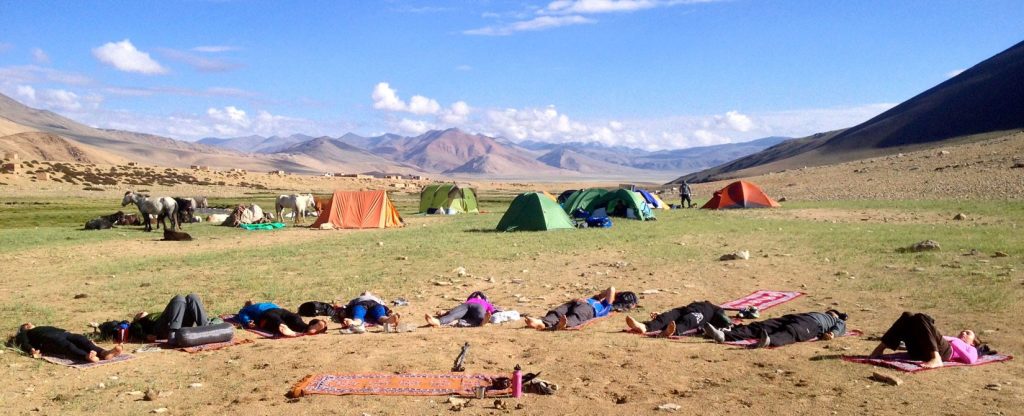
The best reasons to visit Ladakh To witness Ladakh’s stark beauty, one must travel to see it first-hand. Therefore, Ladakh has become a desirable destination, and travellers are thronging hordes to enjoy the natural beauty of the cold desert. Moreover, it has become a perfect destination for a rejuvenating vacation during India’s hot summer. If these reasons are not enough to get you on your feet, here are a few more reasons that a trip to Ladakh can be an experience of a lifetime. You need to know where Ladakh is first and foremost. This hot travel destination is mesmerizing visitors with its natural beauty. It is located north of the Great Himalayan Range, and the Karakoram range is in its north. Now that your mind is racing, here are some reasons why Ladakh should be considered your next destination to travel to. Trekking in Ladakh Ladakh is a paradise for adventure seekers, both novices and experienced ones. Adventure seekers from all corners of the planet to get their adrenaline fixed. Ladakh is also considered an ideal destination for both amateur and experienced mountaineers as well. Many trekking routes cater to beginners to the more serious adventurers. The adventurers experience the warm hospitality and the natural beauty of both the Himalayan and Karakoram ranges. There are several remote high-altitude plateaus if you want to beat the crowded trekking trails. You can go n a hike for several hours up to 30 or more days of extended trekking. Some popular trekking routes are The Sham Trek, Markha Valley, and Spitok to Stok and the longer and less crowded ones are in the Changtang and Zanskar regions of Ladakh. Rafting-in-Ladakh Ladakh is fast becoming an action-packed destination. One can go for half a day rafting on the Indus River or participate in a multi-day trip on the Zanskar River. It perfectly combines whitewater, scenic floats, peaceful villages with friendly residents, and numerous monasteries. Whitewater rafting is one activity not to be missed by the adrenaline junkie. High Altitude Lakes and Wetlands There are numerous Turquoise lakes in Ladakh. For Indian tourists, Pangong Lake is the most popular as it was featured in a Bollywood Movie. More than 70% of this lake is in Tibet (Aksai Chin area – the Chinese in the 60s captured it). This lake is 120km long. The Tsokar (Salt Lake) and Tsomoriri Lakes should interest you, wildlife and bird lovers. These lakes and the surrounding wetlands are breeding grounds for several endangered species of birds. The migratory birds breed during the short summer season before flying to less cold places for the winter. Some of the rare birds that migrate for the summer are Pochards, Terns, Bar Headed Geese, and Black-Necked Crane. Thikse Monastery Ladakh is not just a place for thrill-seekers and adrenaline junkies but also a paradise for those seeking spiritual peace. There are numerous yoga classes and meditation courses during the summer season. Ladakh is marked by many monasteries, prayer walls, and Stupas. One of the popular sightseeing tours is of three monasteries, namely Spituk, Hemis, and Thiksey. Despite being a Buddhist majority, Ladakh people live in peace with their Hindu and Muslim neighbours. Festivals in Ladakh Ladakh is also known as the land of Festivals. They hold numerous Festivals in various monasteries. These Festivities are famous for their colourful costumes and mask dances, and everyone is in a jolly mood. Winter is a fantastic time to visit Ladakh; if you want to witness some festivals when it is not crowded, some hotels will still be open, rooms should be easy to book, and the flights should be much less expensive. The hotels that open during the winter have made heating arrangements. Some of the Monasteries that hold the winter festivals are Thiksey, Chemrey, Spituk, and Matho. Check out our Trekking packages for Nepal, Bhutan, India, and Tibet.
Three perfect reasons to take a yoga retreat
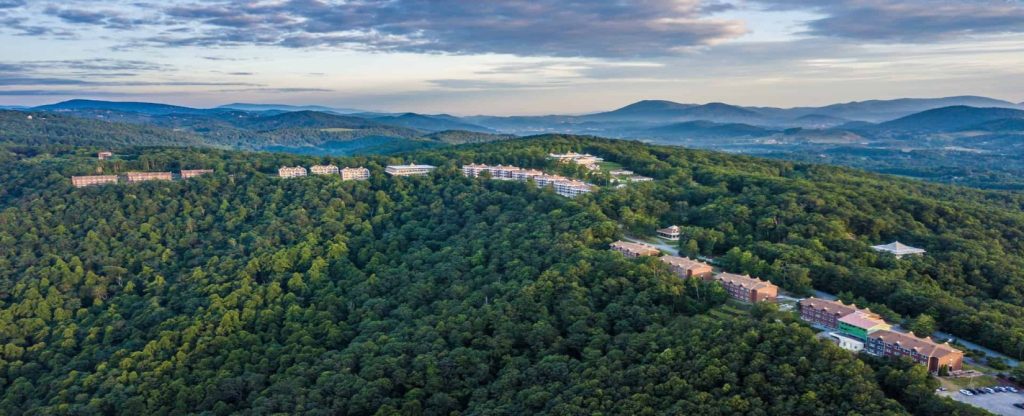
Three perfect reasons to take a yoga retreat Whether you have developed an ‘at home’ yoga practice, attend classes at a studio, gym, or church, or participate in outdoor events, retreats are a unique opportunity to unplug and slow down so that you can develop a deeper connection to your inner Self. Take yourself on a yoga retreat! Immersion is key A retreat not only drops away the day-to-day to-do’s like cleaning, cooking, running errands, and looking after others, but it also supports you in energetic ways. We have picked a spot that is immersed in nature. When nature surrounds you, it softly encourages taking a deeper breath and provides enough space for a long exhale. Let. It. Go. (whatever “it” may be). We chose the location of the Blue Ridge Mountains for its epic beauty and vibrant nature. You are choosing to create more time and space to immerse yourself in self-inquiry. To inquire within while being held by the support of the environment is an added plus. Imagine a weekly retreat routine that is geared towards balance. Every day is curated to return to your health, healing, and a pure power source. Does that not sound pretty great? Community Leaping to join a retreat brings you together with like-minded people. When meeting new friends from new places and diving into a group experience – a specific type of bond happens within each tribe. I have witnessed, time and time again, deeply formed friendships that have lasted a lifetime from retreat weeks. These new pals can become a sounding board to share your evolving yoga practice’s ongoing experiences. That support is vital when moving through the victories and the challenges of life. Consciousness is contagious, and we are part of a community of over 35 million Americans that are now practising yoga. Waking up Diving deeper into the study of yoga and meditation can wake up the nervous system in exciting ways. When you are in the same life routine daily, all the layers of Self become somewhat “bored”, for lack of a better word. With an immersion into yoga and meditation practices while on retreat, you are physically creating new neural pathways in the brain. Each day a new path, a new method, a unique experience as you are guided towards balance. Our retreat offers various yoga styles for all levels and abilities and many different perspectives of these ancient teachings. As you “wake up” your body, mind, and spirit, as a result, you may learn new ways to approach life; playful, curious, and with more presence. Join me and my colleague, Jen O’Sullivan, for our Return to Source Yoga Retreat from May 10-16, 2019, where we will share time-tested yoga methods and contemporary approaches to self-inquiry to help you connect to the spark of your inner wisdom. You can expect nourishing Self-Awakening, Yin, and Restorative Yoga practices, guided meditations, reflective exercises, and many opportunities to partake in the amenities at the centre, including kirtan and quiet walks in nature. Stacy Seebart is an experienced yoga teacher, massage therapist, and educator. Her yoga journey began at the Nosara Yoga Institute (NYI) in Nosara, Costa Rica, fourteen years ago. Stacy has trained yoga teachers around the world and was faculty of both Kripalu Center and NYI. Her approach is heart-centred, grounded, and transformative. This article originally appeared on the Art of Living Retreat Center’s Website.
Ten benefits of using trekking poles
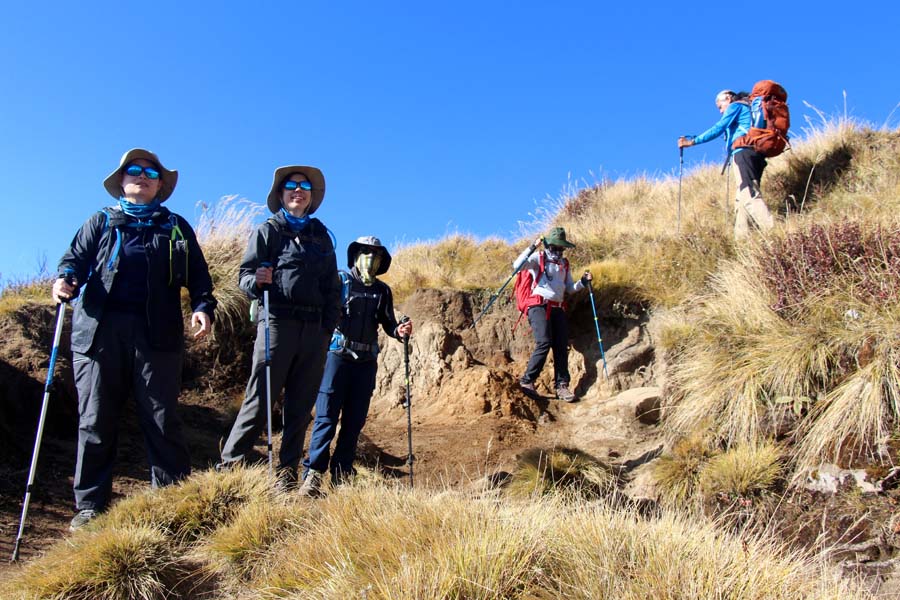
Ten benefits of using trekking poles We used to laugh at trekkers using trekking poles in the late 80s and 90s. However, I started using trekking poles in 2004 and have found them extremely helpful. Now I cannot imagine trekking without my hiking poles. I have learned that they are convenient and helpful while on extended treks. 1. Helps in maintaining a constant pace Getting into a rhythm can help you get past many kilometres with a trekking pole – be it on relatively easy or demanding terrain. After a few short minutes of starting the trek, one gets into a steady hiking pattern, helping maintain a constant pace. Trekking poles can help add an element to the groove while keeping you focused. 2. It provides a boost on ascends. The legs must work very hard while going uphill for an extended period. Utilizing the hiking poles can help boost yourself uphill with your arms, and it takes some stress off your leg muscles while giving your arms some exercise. In addition, it can help you save some energy and cover more ground. 3. Save your knees on downhills Being 193cm in height, the downhills were all right during my younger days. However, I started to have aching knees and sore legs after extended descent when I reached my 40s and started using the poles. It helped tremendously to absorb the continuous pounding my knees had to take on each step. I have learned how to spread the strain to my arms using the poles and ease my joints’ weight. The bars also help with stability on significant steps and steep sections of the trail. 4. Great for balancing on slippery rocks or uneven terrain Many times, I trekked through muddy, wet, icy trails where I could have been seriously injured without my trusty hiking poles. They have saved me countless times and have prolonged my trekking career. 5. Helpful during river crossings I call the trekking poles my extended arms or my four-wheel drive. They have been instrumental in crossing streams or rivers to help keep balance and make giant leaps. They are also great for keeping your while wading in swift rivers, proding for shallow parts to get to the other side safely and dry. 6. Keeping spider webs, prickly bushes and branches, away Once again, the many uses of trekking poles are to push branches and thorny bushes out of the way while on the trail, especially after the monsoon season, when everything is lush and overgrown. You can even use it to push away spider webs to avoid them getting on you or the nettles from stinging. 7. Checking out a loose rock before stepping onto it It is not uncommon to come across steps or stones that are unstable and shaky. You can use a pole with some weight to test the step or rock to see if it can take your whole load. This is another situation when the trusty hiking poles come in handy and save you from a potential injury. 8. Keeping animals at bay. When trekking on the popular trails in the Himalayan regions, you will encounter animals such as snakes, rodents, goats, sheep, ponies, mules, and yaks. If you feel threatened or the more giant pack animals are coming too close for comfort, you can use your poles to push them away. Likewise, you can wave your sticks if you come across an aggressive dog in a village or on the trail. 9. For emergency litter or splint construction You could come across several emergencies when having a sturdy, straight, and light brace can be helpful. The poles can be improvised with lots of padding for splints on broken bones or as support on sprained joints. It can also be used as crutches in case of an injured knee or rolled ankles, and the need to keep weight off it arises until you get proper help. 10. Makeshift tent You can even use it to set up a makeshift tent using a tarpoline, even when camping is not planned. You can also plant the poles firmly on the ground, tie a string between the two poles, and dry your wet clothes or socks. These are some practical benefits of using trekking poles when hiking. There are cheap knock-off versions available in Kathmandu. The cheap poles are the draw of luck; some might last you the whole trekking period or be broken within a couple of days (personal experience). I would advise you to invest in sturdy branded trekking poles such as the ones made by Black Diamond or Leki. Check out our Trekking packages for Nepal, Bhutan, India, and Tibet.
Teeing off while on a trek? Why not?
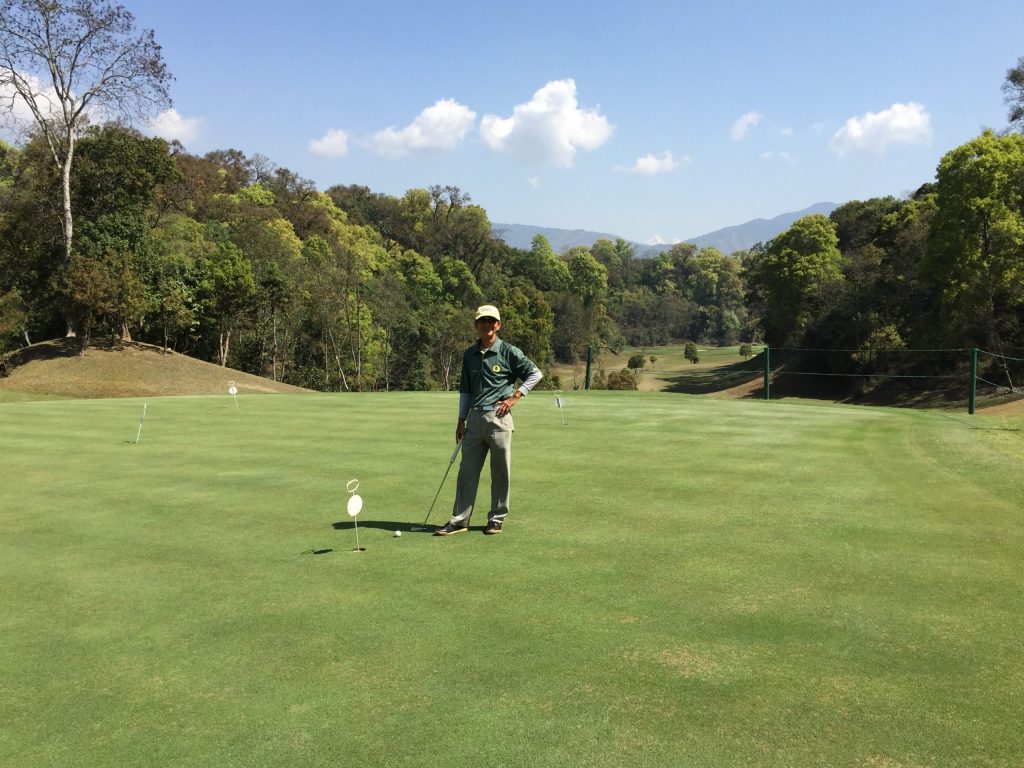
Are you teeing off while on a trek? Why not? Raj Tamang, the founder of Responsible Adventures, came up with the idea of teeing from venues above 5000 meters from as many places as possible. So he has tee-offs from Throrung La pass, five passes above 5000 meters in the Upper Dolpo region, and six tees-off from the Gokyo Lakes and Everest Base camp areas. This is probably a world record of sorts. He has played 18-hole golf twice and nine-hole golf once. Hence, he isn’t a regular golfer at all. He did this to do something no one else had done. We collected all the golf balls for those concerned about leaving golf balls in the mountain environment. We even used biodegradable golf balls from Spain in case we lost one. This project started in September 2016, and the last tee-offs were done in December 2017. Read more Check out our Trekking packages for Nepal, Bhutan, India, and Tibet.
Connect with Nature by Taking Yoga Outdoors
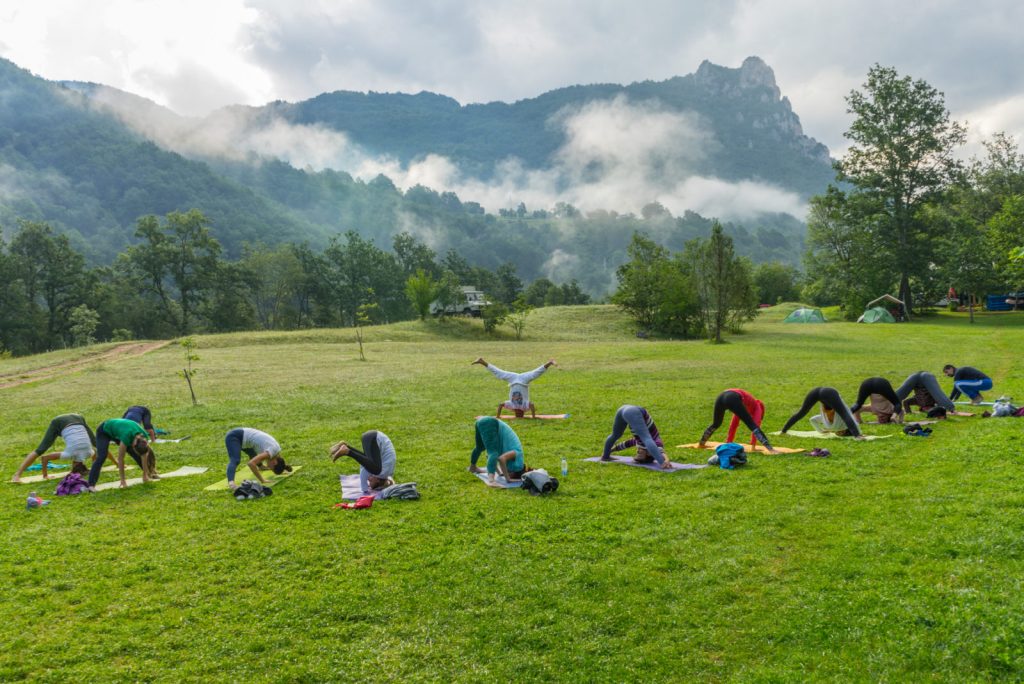
Connect with Nature by Taking Yoga Outdoors By Masie Barefoot-Judson My last name happens to be Barefoot, and it is probably not too surprising, for those reading this article, that going barefoot to practice yoga felt very natural for me. Over time I began to understand the feeling I remembered from childhood is what yogis call “grounding” or pulling in prana; feeling the presence of the earth through the soles of my feet, up to the palms of my hands, filling my cup and creating an abundance of prana within. Have you ever felt the earth beneath your feet – I mean, really felt it? Have you taken your shoes off and felt the cold soil or spread your toes wide to feel the surface of your yoga mat? What I remember most about my childhood is the freedom of going barefoot — playing without shoes and exploring wide-open spaces with my hands and feet. Although I have grown up, there is still a bit of this child practising yoga. My yoga mat may not physically be a wide-open space, but still… it gives me the chance to explore its textured surface on my skin with child-like delight. “Connecting with your natural setting is grounding and playful, and with practice, often meditative.” Perhaps you, too, have felt this connection with the earth moving into your practice. In my teaching style, the seasons play a vital role in the sequences I use. On warm days, I may notice that my students seem more limber but often feel tired by the end of the day; and on cooler days, I get requests to open the shoulders where we have cinched tension around the neck. Moreover, as we move through Spring, I create intense internal heat with long, slow movements, taking the time to linger and find ease within the movement. Spring is often the perfect time to take your yoga outdoors to bask in the sun or enjoy a nice shaded spot. Alternatively, forget your mat and leap into nature as your yoga mat. I have rested my back against boulders in tadasana, connecting with the mountain. The options are endless – imagine yourself in bidalasana, alternating between cat and cow poses. Alternatively, you could rise into a tree pose while reaching out and resting your palm on a tree’s trunk. Connecting with your natural setting is grounding, playful, and often meditative with practice. If you instead practice meditation instead of yoga outdoors, you can still practice outside and connect with nature. For example, you can sit at the base of a tree and use the canvas of your mind to grow upward like the tree. Feel your roots grow down into the soil from the bottom of your spine. Expanding our consciousness, we dive deeper into our connection to nature. May Day approaches, and the ancient celebration of Beltane marks Spring. The season is a chance to invite abundance, growth, and increase into your life. So I invite you to roll your mat outdoors this May 1st to explore your connection to Mother Earth and draw on the seasons as you expand your yoga lifestyle. I also invite you to play like a child and have fun. This article originally appeared on the Art of Living Retreat Center’s Website. Check out our Trekking packages for Nepal, Bhutan, India, and Tibet.










